Today’s RaiseAChild.US Huffington Post Gay Voices “Let Love Define Family®” series installment, required an approved court order from the California Superior Court, County of Los Angeles Juvenile Division. As a result, RaiseAChild Founder and CEO, Rich Valenza, takes us behind the scenes of a facility that has served thousands of foster children, but seen by few adults.
Tucked away, at an address that you won’t likely find on your GPS, is a facility that functions as the last resort for foster children in Los Angeles County. Each night, starting at about 6:30 p.m., the place begins to buzz. Social workers pull up in reserved parking spots right in front of the building. I watch as they unload their cars of children of all sizes, shapes and colors. Some workers enter the automated doors carrying babies, or holding the hands of young sibling groups. Others walk behind teenagers who don’t need help with the routine they know all too well.
Regardless of the age of these children, they all have unfortunate similarities. Each child is likely to have experienced serious episodes of neglect or abuse. Fear, bewilderment, and anxiety are easy to read on each of their faces. Everyone of these children have been delivered to this facility because there are not enough foster parents in Los Angeles County to take them. Not even for one night.
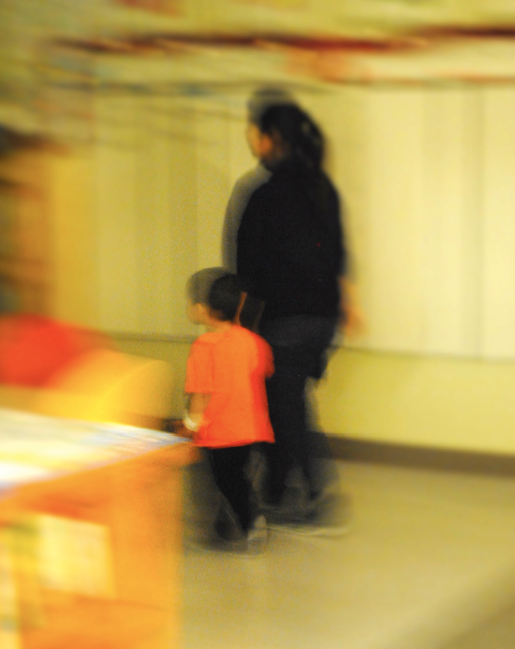
Upon arrival, all foster children are ushered down a long sterile hallway and processed through a medical clinic for an initial screening. From there, their social workers separate the children according to their age. Babies to 11-year-olds are delivered behind a secured blue metal door with a large sign that reads “Children’s Welcome Center.” It’s a large room that echoes from linoleum floors and sparse furnishing. By 9:30 each night, it is “lights out” as cribs and folded cots have been rolled out from the storage closet and lined up across the floor. Because sound carries across this room, one restless baby can easily wake all of the other children. But usually these children sleep soundly as this safe space likely provides the first sense of security in their lives for some time.

Foster teens are walked to a different end of the facility and check in at a security guard’s station near an overhead sign that reads “Youth Welcome Center.” But this hardly seems like a welcoming place when each teen is then screened more carefully to insure that drugs, alcohol and weapons don’t find their way in.
On the cold December night that I visited the Children’s Welcome Center, there were five children between the ages of one and nine expected to spend the night. The months of November and December, I am told, turn out smaller numbers of younger children to this Welcome Center because the holiday season generally generates more compassion for younger foster children. But starting in January, the nightly numbers of children begin to climb again. Typically, March and October are peak months with the number of children 11 and under rising to 20 or more. Teens in the foster system are not as lucky. It is exponentially more difficult to find foster homes willing to take in a teen. Each night up to 25 foster teens enter in the Youth Welcome Center for a hot meal, a fresh change of clothes, a clean shower and safe place to sleep. There are about fifteen “regulars” at various ages between 18 and 20 that show up at the door most every night. During the day these “regulars” fend for themselves on the streets of downtown Los Angeles but return at night to the one staple thing in their lives.
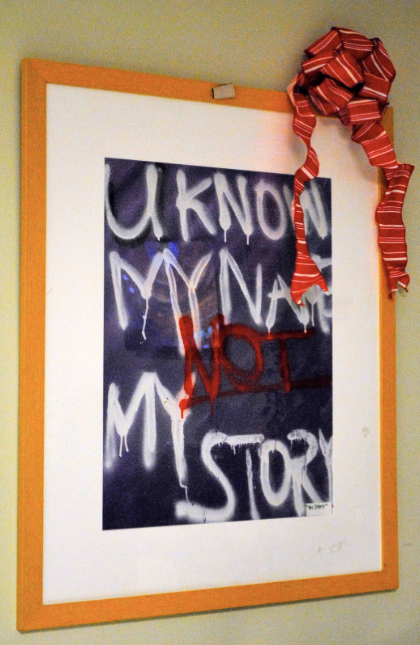
“We have an unlocked policy here at the Youth Welcome Center,” said Valerie Coleman-Brown, a seasoned Youth Supervisor with a gentle manner. “At any time during the night, these teens are free to leave and return. We do our best to counsel them to stay safe and inside with us. We share stories of the streets that are so truthfully bad that we hope it changes their minds about walking out the doors. Sometimes it works. Recently, we developed a detailed form and ask them to complete and sign it. The form even asks them to describe their clothing and identifying marks all in an effort to really make the teens stop and think about risk and the decisions they make.”
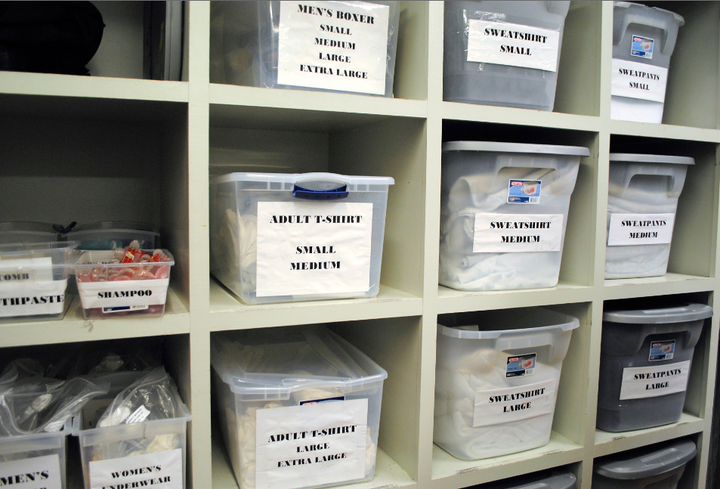
The main room of the Youth Welcome Center is cavernous and noisy from a television that is turned up too high. Three overstuffed naugahyde couches are pushed to the side to make room for the night’s roll out of cots. I am introduced to Bryana, a foster youth with a pure innocence about her. She agrees to sit with me for an interview. I start nervously by saying that she doesn’t have to answer any of my questions that she doesn’t want to. She acknowledges softly.
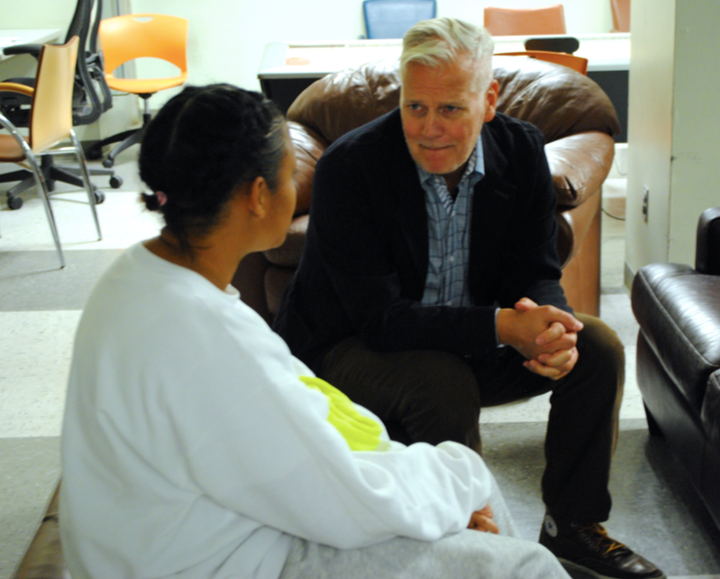
“How long have you been in foster care,” I ask.
“Since I was 13,” Bryana answers.
“And how old are you now?”
“I’m 15,” she said shyly.
“My son is 15 and I have a daughter that is 14,” I offer in hopes of breaking the ice. “I adopted them from the county.”
Suddenly, she spoke up. “It would be a big help if more parents would come in, not just for me, but for a lot of other kids that don’t have anywhere else to go. There are kids that have been here for like five weeks."
“And how long have you been here,” I ask.
“Five weeks. No school. No nothing. I’m just here waiting.”
“Let me ask you,” I said. “What would be your ideal home? Who would you hope to go with?"
She paused and looked straight in my eyes and answered, “My mom.”
I flush with embarrassment for asking the question.
“But really,” she covers my awkwardness. “I would like any house. Any parents with brothers or sisters. It doesn’t matter to me.”
“May I ask about your mom,” I ask. “How is she?”
“She’s fine,” Bryanna answered and offered nothing more.
“Do you have brothers or sisters?"
“I have two brothers,” she said. “They were in the foster care system when they were babies. Me too. Eventually, we all got out of foster care. But then I got put back in when I was 13.”
I was at a loss of words. “Is there anything else you want to add?”
“Well, DCFS (Department of Children and Family Services) is really good. I’ve been here so long that now they are like my family.”
As I thanked Bryanna, I was struck by her last statement. This 15 year-old taught me a lesson. She opened my eyes. For in that moment, I realized that while I was judging the facility by its cold linoleum floors and institutional florescent lighting, I was totally missing what the foster children recognize and value as the true heart of the facility. It’s not the building structure, but it is the people who work there. That heart is all of the staff that show up night after night to help and care for these kids.
I pass through another doorway. I met four women whose sole job is to work the phones throughout their entire eight hour shift. They are members of the Accelerated Placement Team and each of them log thousands of calls a week. Their shared purpose is to find available foster homes and beds for the 35,000 children in the foster system of Los Angeles County.
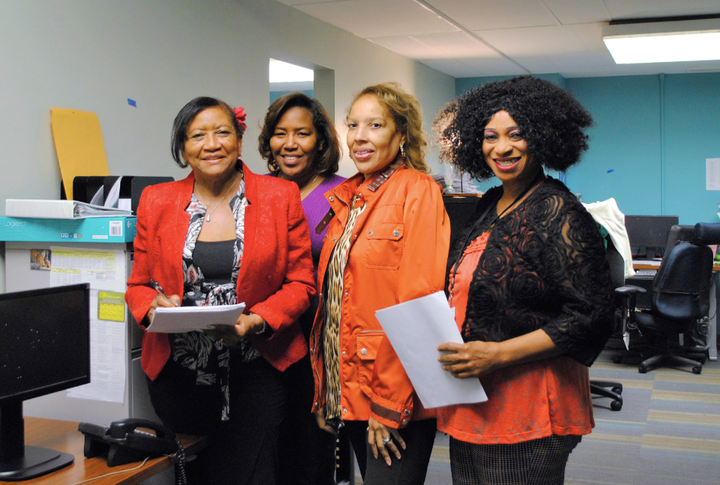
“Wow, I am impressed how dressed up everybody is here,” I say. “Does this happen all the time?”
“Actually, tonight is a casual day,” says Princess Rojas with a laugh and big smile.
“Whatever movie you saw with frumpy social workers,” comments Rhonda Towles, “that is definitely not our group!”
“So you are here to interview for a gay newspaper,” asked Michelle Fenison.
I’m surprised by the directness of the question and stumble a bit on my reply. “Um, yes. I’m writing an article for the Huffington Post Gay Voices section.”
“Well good,” Marocka Covington said. “Cause we have some things we would like to say to the LGBT community.”
“Ok,” I say, unsure of where this is going.
Marocka starts.
“We understand that many foster youth who may self-identify as LGBT or questioning, feel that they aren’t accepted in some foster families and foster homes. That’s why we want to make sure we have a good representation from every community. Even if we have a good home for a foster youth, some of these teens are asking for a match with a parent or parents that mirrors their own demographic. We have more transgender children coming forward because society is changing. That is the next challenge for us, even though we have made in-roads in the gay community, we are not yet seeing that we have yet made that progress in the transgender community.”
“We need a lot of help, especially from the transgender community,” Rhonda says. “It would be nice to have more resources for our transgender youth. We want more accepting foster homes. We find that the LGBT community is more accepting of children of all kinds.”
“Some people think that teens in foster care are trouble,” said Marocka. “Truth is that many times, the foster kids are not really angry at their foster parents -- they are angry at the world for their predicament. But the biggest benefit to adopting from foster care is that you have these wonderful children to will love you for the rest of your life.”
“You know,” I say, “several transgender people have expressed their concerns that they fear they won’t be permitted to foster and adopt.”
“Well, they need to be reminded that there is a California law that they be accepted,” Marocka says forcefully. “So please let the transgender community know that they are welcomed and we are here to bring children to them, if they want them. Because transgender and gay people can love and care for children like anyone else."
“In my experience,” Marocka continues, “over 40 years now, I’ve seen successes in all kinds of family structures. On the flip side, we have many different kinds of children that really need to know that there are parents and homes out there that will that them and care for them. I tell you, these LGBT children are not aware that there are good foster parents out there that want them. Even when these children arrive here, many aren’t sure if we are going to accept them. They are very subtle about how they want to come out to us.”
“I can understand that,” I answer. “Plus, I’ve heard of many instances when foster children who are questioning their own sexuality do come out to some foster parents, it creates a lot of havoc for themselves. As a result, 40% of homeless youth in Los Angeles identify as LGBT.”
“We try to avoid that by letting the foster parents know in advance,” said Rhonda. “I say, that if that is something that you don’t think you can do, then let’s move that child on to someone who can support that child.”
“So, you have been doing this for 40 years,” I ask Marocka.
“If I can help even just one child in one year, then its been successful year,” admits Marocka. “I have the heart for it and the attitude. I think I will keep doing this for the rest of my life. I love all these children. I want to help them all. That’s why I am asking you to tell your readers that we need each and everyone of them to step up now.”
While the Children’s and Youth Welcome Centers are unique to Los Angeles County, the challenge of finding enough good people to foster and adopt the 415,000 children of our nation’s foster system is not. RaiseAChild.US is the nationwide leader in the recruitment and support of LGBT and all prospective parents interested in building families through fostering and adoption. It would be our honor to help you build a family of your own in 2016. RaiseAChild.US recruits, educates, and nurtures supportive relationships equally with all prospective foster and adoptive parents while partnering with agencies to improve the process of advancing foster children to safe, loving and permanent homes. Please. Take the next step to parenthood at www.RaiseAChild.US.
